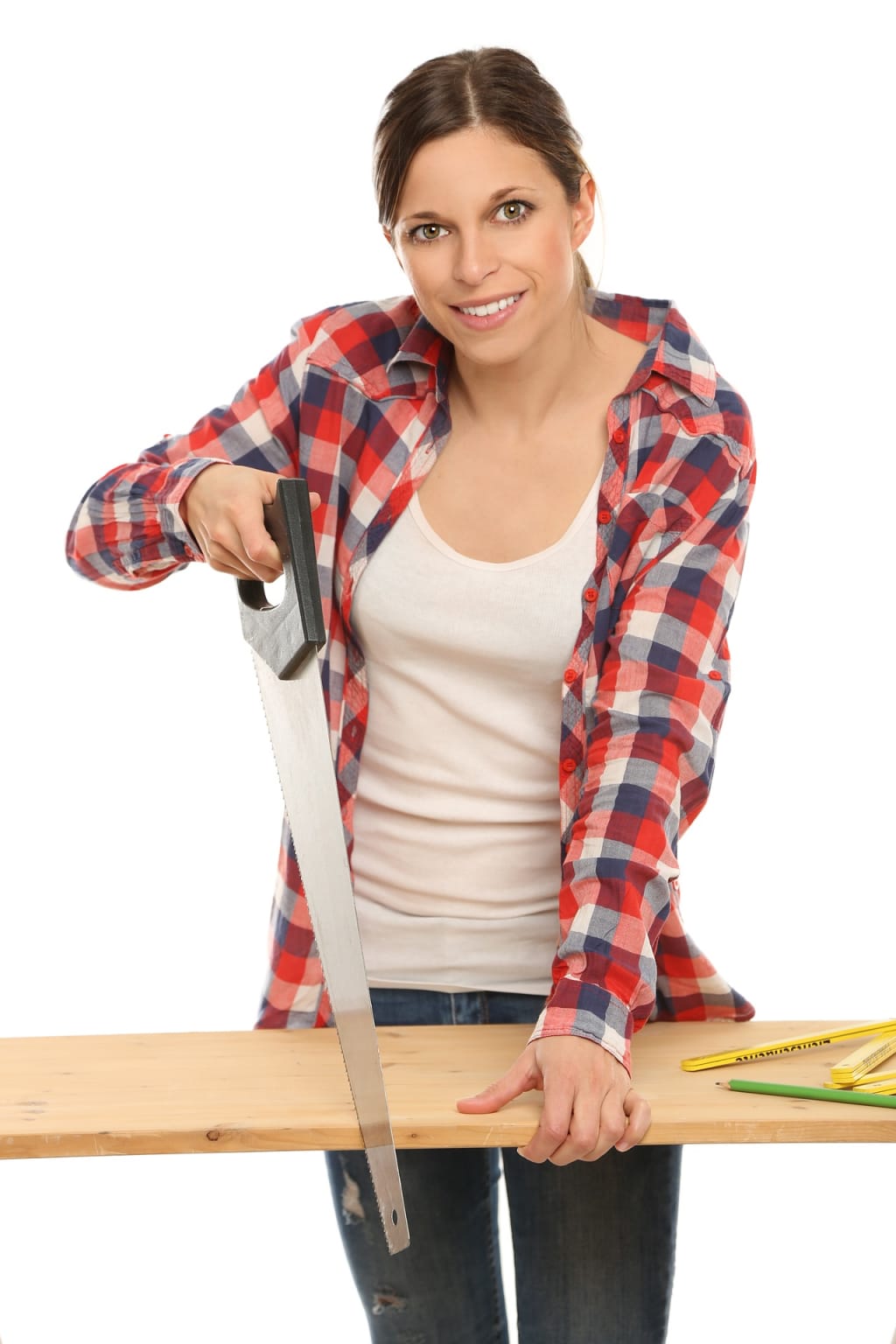
There are many different types of saws: electric saws, circular saws, jig saws, band saws and so on. This is all about how to use a hand saw, of which there are many and it is one of the first disciplines of being a carpenter.
- The cross cut saw is the one most widely used and is usually about 24 inches long with 8 to 11 teeth per inch. It has hard-point teeth and is disposable.
- The rip saw is for cutting with the grain and is much rougher than the cross cut saw.
- Tenon saws are too short for general cutting. They are used for a finer cut in furniture making.
- Bow saws are used for pruning and woodcutting.
- Coping saws are for fine wood cutting.
- Back saws are for fine cutting, moulding and trim.
- A pull saw is for fine wood cutting and cuts on the pull stroke.
- The dovetail saw is for fine joint cutting.
- The keyhole saw is for circle and curve cutting.
- Drywall saws are for cutting wall board.
- Hacksaws are for cutting metal.
These are the main types of saws available, but there are many more.
We will be using the cross cut saw as it is the most widely used one.
To begin sawing, place your piece of timber on your sawing bench or sturdy frame, and if possible, clamp it or put heavy weights on it to hold it firmly in place while it is being cut.
Mark your timber for cutting with a pencil line, using a set square or the saw to get a straight 45 degree cut line to saw along.
Then, place your saw on the line and draw your saw back towards you to put a groove in the timber for the saw to follow as it cuts.
With even strokes, begin to saw, keeping the saw from angling. If the timber is small enough you can use a mitre box to get a perfect cut.
Hold the end that is being cut off so that it does not fall away and rip out the end, causing damage.
By pointing your index finger as you saw, it will help to steady the saw.
Be careful not to go too fast and have the saw come away from the work and rip your skin. Saws are very sharp and can and do cause severe wounds.
Take your time to saw and use the entire blade in long, smooth strokes right to the end of the saw and back.
Practicing on some scrap timber will help you to get used to the saw so you can cut a straight line.
Be careful not to cut it too short. You won't be able to add a piece.
At one time saws would get re-sharpened, but nowadays they are mostly disposable. Modern saws are designed to be thrown away when they don't cut anymore. So after a lot of use, if you find it dragging or pulling then it is time to get another one.
It is not really hard to use a saw, and with some practice you will be able to use it properly and safely.
It is very easy to cut yourself with a saw, one moment of unconsciousness is all it takes to slip and rip into your hand, so do be careful.
It is also easy to cut short, so measure more than once; it’s better to cut it too long than too short; but if you do cut it almost on the line then it will be really hard to cut just a small bit off, and this is when you will need a compound mitre saw to chop off that little bit that a hand saw will not be able to.
About the Creator
Dean Moriarty
writer, artist, musician and photographer






Comments
There are no comments for this story
Be the first to respond and start the conversation.